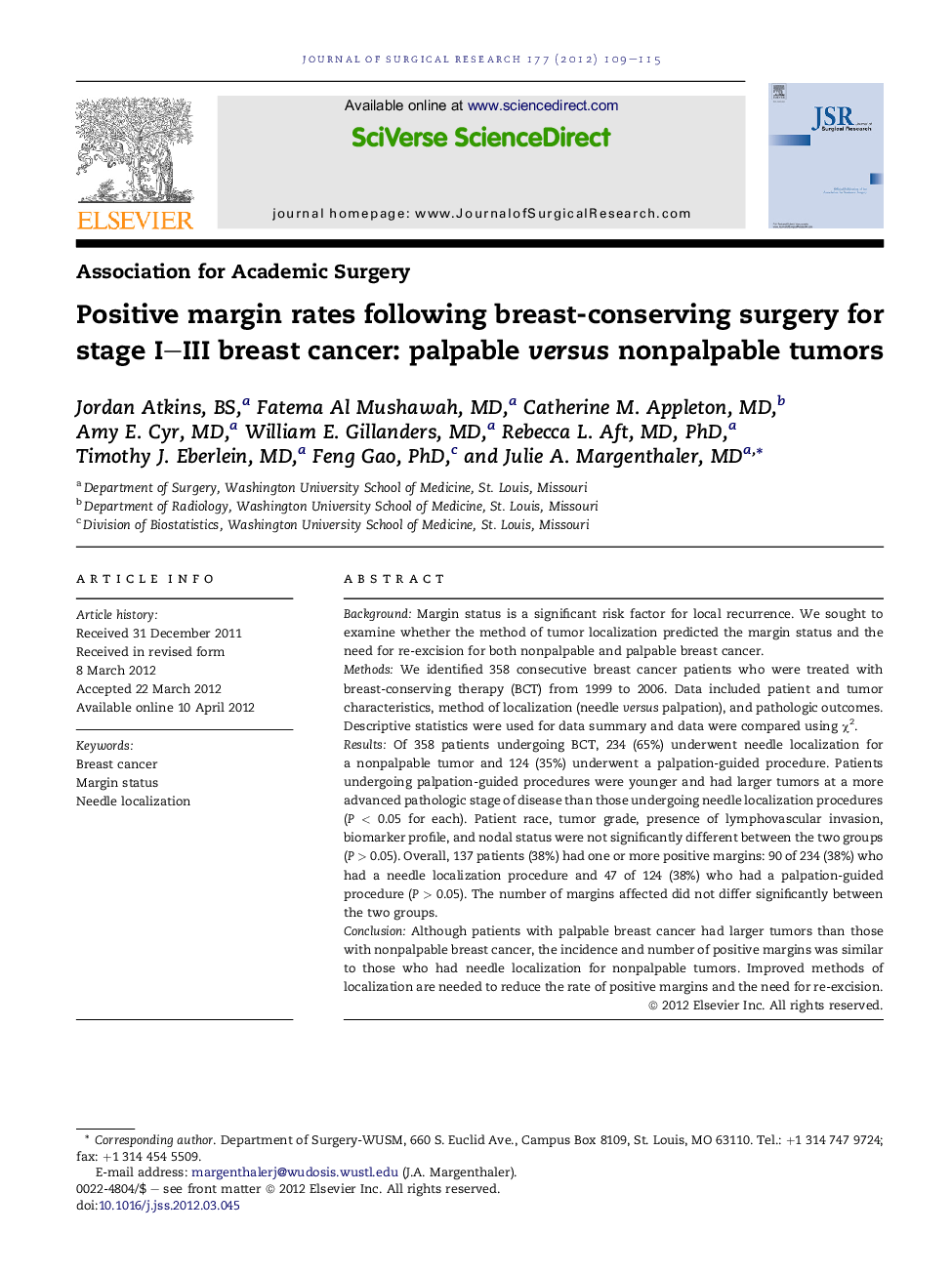| Article ID | Journal | Published Year | Pages | File Type |
|---|---|---|---|---|
| 4301498 | Journal of Surgical Research | 2012 | 7 Pages |
BackgroundMargin status is a significant risk factor for local recurrence. We sought to examine whether the method of tumor localization predicted the margin status and the need for re-excision for both nonpalpable and palpable breast cancer.MethodsWe identified 358 consecutive breast cancer patients who were treated with breast-conserving therapy (BCT) from 1999 to 2006. Data included patient and tumor characteristics, method of localization (needle versus palpation), and pathologic outcomes. Descriptive statistics were used for data summary and data were compared using χ2.ResultsOf 358 patients undergoing BCT, 234 (65%) underwent needle localization for a nonpalpable tumor and 124 (35%) underwent a palpation-guided procedure. Patients undergoing palpation-guided procedures were younger and had larger tumors at a more advanced pathologic stage of disease than those undergoing needle localization procedures (P < 0.05 for each). Patient race, tumor grade, presence of lymphovascular invasion, biomarker profile, and nodal status were not significantly different between the two groups (P > 0.05). Overall, 137 patients (38%) had one or more positive margins: 90 of 234 (38%) who had a needle localization procedure and 47 of 124 (38%) who had a palpation-guided procedure (P > 0.05). The number of margins affected did not differ significantly between the two groups.ConclusionAlthough patients with palpable breast cancer had larger tumors than those with nonpalpable breast cancer, the incidence and number of positive margins was similar to those who had needle localization for nonpalpable tumors. Improved methods of localization are needed to reduce the rate of positive margins and the need for re-excision.
